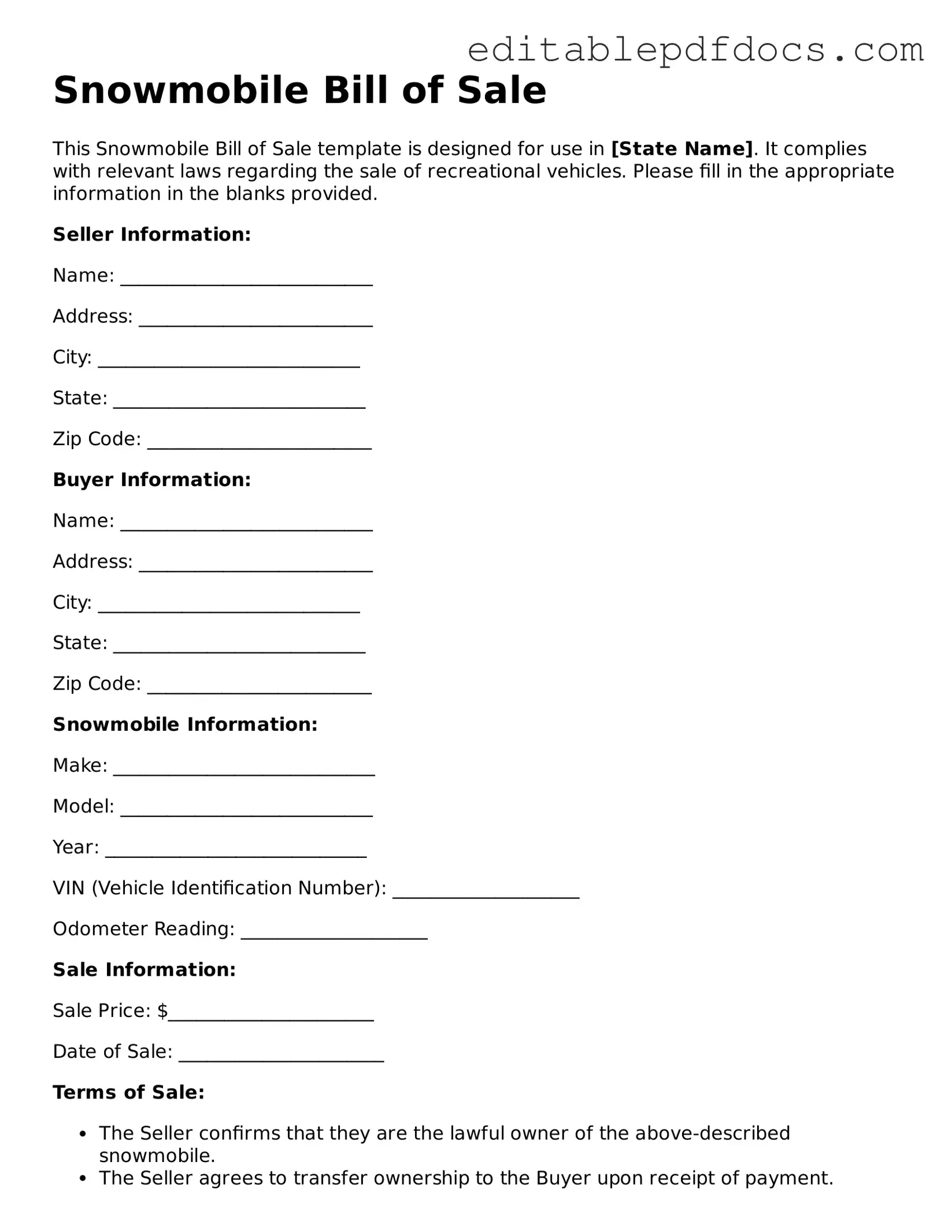Completing a Snowmobile Bill of Sale form can be straightforward, but mistakes can lead to complications. One common error is failing to provide accurate information about the snowmobile itself. This includes the Vehicle Identification Number (VIN), make, model, and year. Omitting or incorrectly entering this information can cause issues with registration or ownership verification.
Another mistake often made is neglecting to include the sale price. The sale price is essential for both the buyer and seller. Without it, the transaction may not be legally recognized, and the buyer could face challenges when trying to register the snowmobile.
Buyers and sellers sometimes forget to date the document. A date is crucial as it indicates when the transaction occurred. This can be important for tax purposes and for establishing a timeline of ownership.
Many individuals overlook the need for both parties to sign the form. Signatures confirm that both the buyer and seller agree to the terms of the sale. Without signatures, the document may not hold up in legal situations.
Inaccurate personal information is another frequent mistake. This includes names, addresses, and contact information for both the buyer and seller. Providing incorrect details can lead to difficulties in communication and may complicate any future issues regarding the sale.
Some people fail to include any warranties or guarantees. If the snowmobile is sold "as is," this should be clearly stated on the form. Without this clarification, misunderstandings may arise regarding the condition of the snowmobile.
Additionally, not keeping a copy of the completed Bill of Sale is a mistake that can have lasting consequences. Both parties should retain a copy for their records. This can serve as proof of the transaction in the future.
Another common oversight is not checking local regulations regarding the sale of snowmobiles. Different states may have specific requirements for the Bill of Sale. Ignoring these can result in legal issues or fines.
People may also forget to provide information about any liens on the snowmobile. If there are outstanding debts associated with the vehicle, these should be disclosed. Failure to do so can lead to serious legal repercussions.
Finally, individuals sometimes rush through the form without reviewing it thoroughly. Taking the time to double-check all entries can prevent many of the aforementioned mistakes. A careful review ensures that the document is complete and accurate, providing peace of mind for both parties involved in the transaction.
